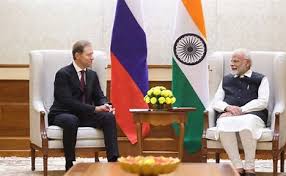 Finance Minister Arun Jaitley’s first budget in the coming weeks will give some idea of the new direction Prime Minister Narendra Modi wants to give the Indian economy.
Finance Minister Arun Jaitley’s first budget in the coming weeks will give some idea of the new direction Prime Minister Narendra Modi wants to give the Indian economy.
In all his election speeches, Modi focused on his new “development model” based on his experience in Gujarat. The budget may give a glimpse of some of these ideas Modi would like to put before the people. After removing the hype around many exaggerated claims about the “Gujarat model”, Modi can tom tom one achievement in Gujarat. Gujarat did have very high agriculture growth of about 10 percent, at an average, for ten years during his tenure. This would have raised farm incomes across the board. The success story in agriculture was scripted simply by taking newly created sources of water to farms and by providing extension services, including technology to farmers.
So Arun Jaitley’s budget will definitely have a strong section covering ideas taken from Modi’s agriculture economics practiced in Gujarat which the Centre will offer to the rest of the country. Recently, Prakash Javdekar gave this writer some hints in a panel discussion on BJP’s new approach to agriculture. He said the BJP will simply build a plan to take water to every farm. It will be done in mission mode.
This will require investments in new irrigation infrastructure throughout the country. Taking water to every farm sounds simple but it is actually a very difficult task. Even today, nearly 60 percent of agriculture in India is dependent on rains. Since agriculture is a state subject, Jaitley will have to come up with a new agriculture infrastructure policy where he builds an incentive structure for states to invest in irrigation facilities through centrally sponsored schemes.
As fresh incentive, the government could come up with a new central procurement policy for cash crops and other agriculture produce outside the current central procurement program. Modi has explicitly promised in all his public rallies that his government would give farmers a profit margin of 50 percent over and above his total input cost. This is a clear indication that the government is looking at a new procurement policy for farmers.
However, giving farmers a much higher procurement price will be inflationary and economists have argued that the UPA could not control food inflation— consistently over 10 percent – largely because it increased minimum support price for farmers by 20 percent annually in recent years. The UPA constantly faced the conflicting demand of farmers and consumers. When farmers got a higher price for their produce, the consumers suffered higher food inflation. Politically, this has been a tough balancing act and Jaitley will also face this problem in the years ahead. Both farmers and consumers at large are politically vocal and the Congress suffered the most electorally because of food inflation.
Jaitley has spoken of controlling inflation by releasing food grain stocks from FCI godowns on a big scale to cater to the poor. But a lot of the food inflation comes from protein items of consumption like eggs, milk and meat products as well as vegetables and fruits. How do you control inflation in these items? One suggestion is to lower import duties on some of these protein items from about 30 percent at present to zero. This should bring down prices by 30 percent. But if you do that, the poultry and dairy farmers will protest. Again there is a conflict between the farmers and consumers. This will be the most difficult political question to resolve. It is really to be seen how the Gujarat model will be brought to agriculture at the national level.
The corporate world which funded BJP in a big way have huge expectations from Jaitley’s budget. They seem to believe that the BJP government will solve all their problems. It is a fact that a large part of the current slowdown in the economy is linked to the global economic conditions which are still uncertain. The corporate world will obviously want a whole new set of concessions to help boost their own balance sheets. But Jaitley will have to be careful about the larger political message of his budget. Modi explicitly stated in his address to the newly election BJP MPs in the Parliament premises that the government funds really belonged to the poor and must be used for the benefit of the poor. This message would appear socialist in its orientation.
Therefore the actions in the first Modi budget cannot be perceived as pro-capitalist. Arun Jaitley will have to guard against this. Of course, Jaitley can send some positive signals by laying the road map for indirect tax reforms in the form of Goods and Services Tax (GST). A lot of work has already happened on GST, though it was the BJP states, especially Narendra Modi, who had earlier blocked its quick progress. Now, the BJP can take credit for the most crucial step of bringing a constitutional amendment to rearrange the collection and sharing of indirect taxes by the Centre and states. GST is a natural fiscal stimulus as it will cut indirect tax by atleast seven percent if Arun Jaitley shows some boldness by having a single GST rate of 16 percent to be divided equally between the Centre and states.
The pending Direct Tax Code, a much simplified new Income tax law which takes away the taxman’s discretion, could also be used to give comfort to the corporate world. Jaitey will use the budget to lay down the fiscal policy road map for the next two to three years as fiscal deficit cannot be eliminated overnight given the political nature of subsidies incurred.
Overall, the biggest challenge for Modi will be to strike a balance between big capital which wants him to follow a certain framework, as articulated by the stock markets, and the needs of the aspirational class in rural and semi-urban India which has voted for the BJP in the hope of a better life. Some economists argue that there is an overlap between the demands of the stock market and what the emerging aspirational classes want. There could also be intense conflict between the two forces. Jaitley has said, sacrifices will have to be made to correct the fiscal path. The question is who will make the sacrifices — big capital or ordinary people?
Courtesy: ORF
Author Profile
- India Writes Network (www.indiawrites.org) is an emerging think tank and a media-publishing company focused on international affairs & the India Story. Centre for Global India Insights is the research arm of India Writes Network. To subscribe to India and the World, write to editor@indiawrites.org. A venture of TGII Media Private Limited, a leading media, publishing and consultancy company, IWN has carved a niche for balanced and exhaustive reporting and analysis of international affairs. Eminent personalities, politicians, diplomats, authors, strategy gurus and news-makers have contributed to India Writes Network, as also “India and the World,” a magazine focused on global affairs.
Latest entries
 DiplomacyOctober 4, 2025UNGA Resolution 2758 Must Not Be Distorted, One-China Principle Brooks No Challenge
DiplomacyOctober 4, 2025UNGA Resolution 2758 Must Not Be Distorted, One-China Principle Brooks No Challenge India and the WorldJuly 26, 2025MPs, diplomats laud Operation Sindoor, call for national unity to combat Pakistan-sponsored terror
India and the WorldJuly 26, 2025MPs, diplomats laud Operation Sindoor, call for national unity to combat Pakistan-sponsored terror India and the WorldJuly 25, 2025When Fire Ends, Diplomacy Begins
India and the WorldJuly 25, 2025When Fire Ends, Diplomacy Begins India and the WorldJuly 16, 2025Operation Sindoor and its Aftermath: India’s Successful Diplomatic Outreach
India and the WorldJuly 16, 2025Operation Sindoor and its Aftermath: India’s Successful Diplomatic Outreach







